Rice University, in Houston, brings new leadership to enrich its research and cutting-edge innovation.
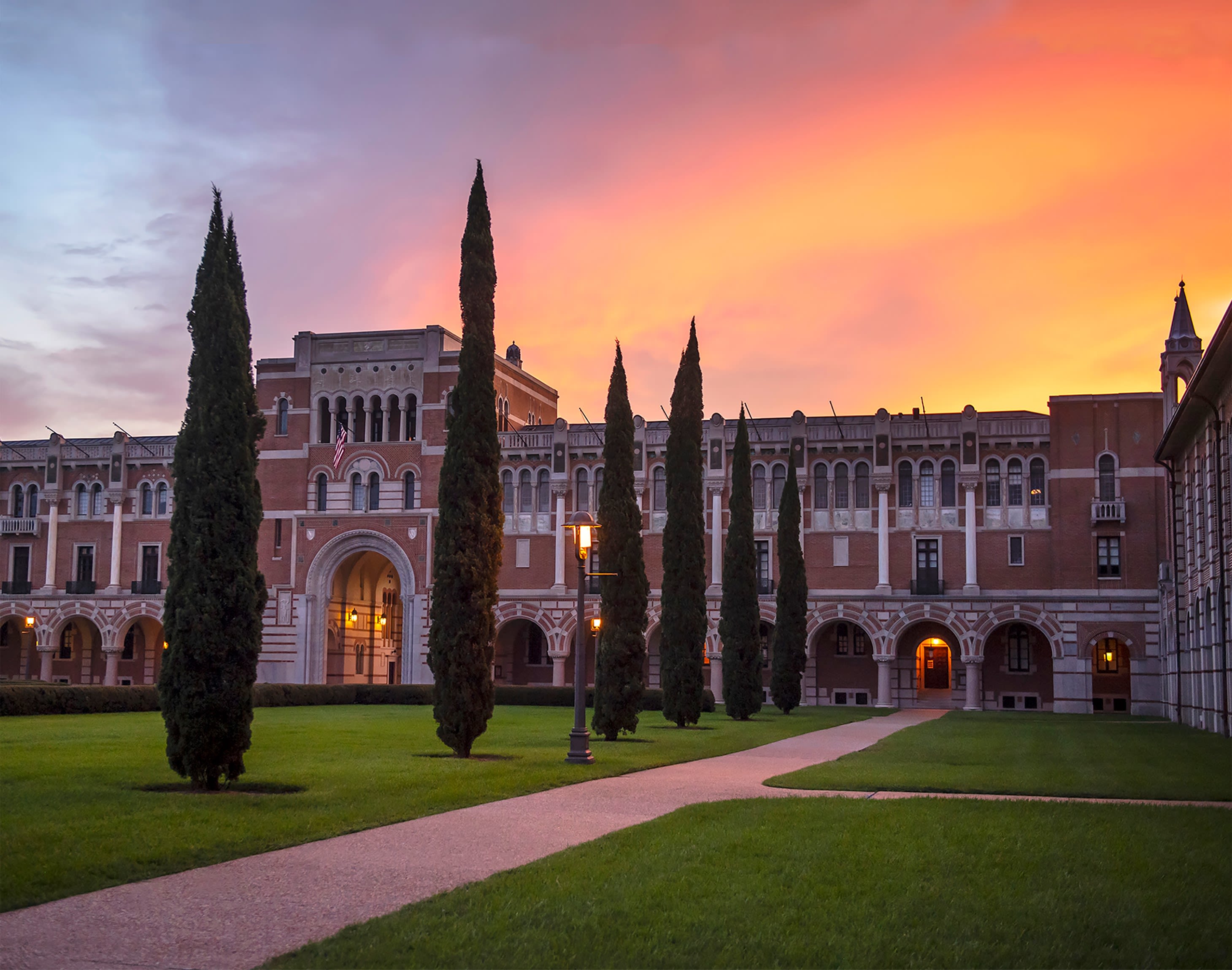
Rice University bioengineers Amanda Nash and Omid Veiseh tackle ovarian and cervical cancer with bead-like “drug factories” they created. Federal regulators have approved the first human clinical trial of the pinhead-sized implants which produce natural compounds that program the immune system to attack tumors. (Video by Brandon Martin/Rice University)
Rice University bioengineers Amanda Nash and Omid Veiseh tackle ovarian and cervical cancer with bead-like “drug factories” they created. Federal regulators have approved the first human clinical trial of the pinhead-sized implants which produce natural compounds that program the immune system to attack tumors. (Video by Brandon Martin/Rice University)
Rice University recently elected its eighth president, Reginald DesRoches, and with his appointment comes a burst of new energy — and new people — to further elevate the work and accomplishments happening across campus every day.
We’re the campus of choice for the leaders of both today and tomorrow, which means we also recognize the steps we take in our present moments will hold future impact for not just us but for the world as well. Armed with that thought, President DesRoches has bolstered Rice’s mission to champion knowledge and its useful output by setting his sights even higher.
To accomplish this, he is building a team to expand Rice’s aptitude with a strong attention to both research and innovation, welcoming Ramamoorthy Ramesh as vice president of Research and Paul Cherukuri in the newly created role of vice president of Innovation.
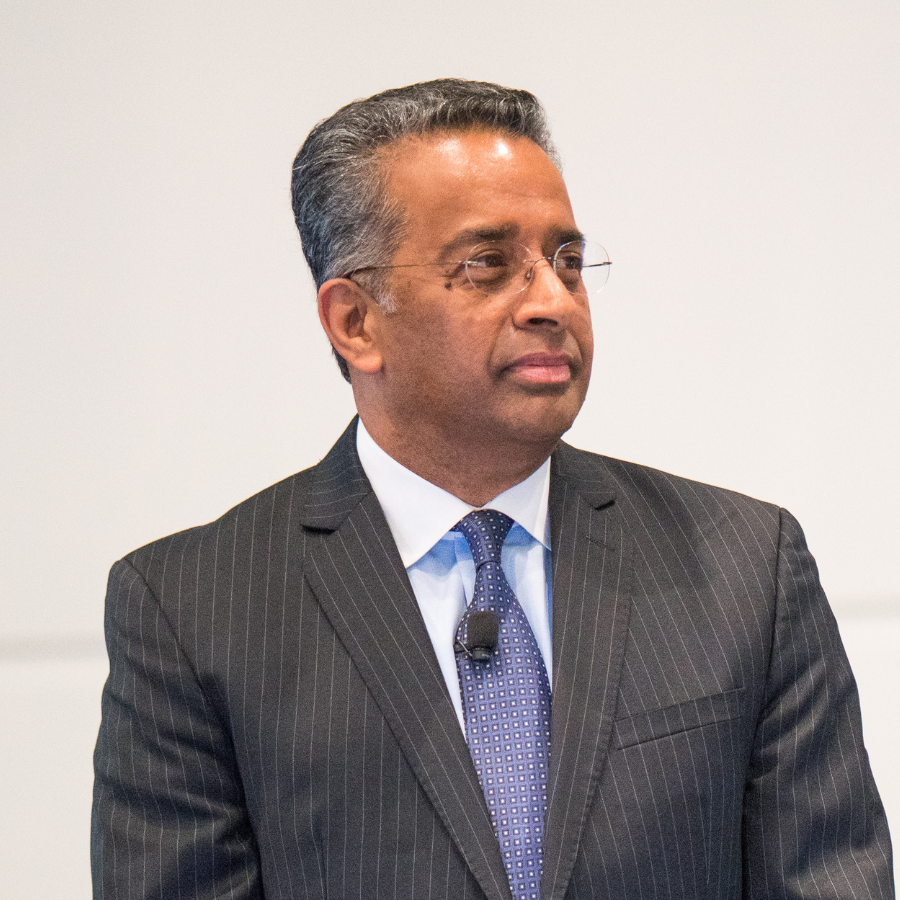
Ramamoorthy Ramesh, Vice President of Research
Ramamoorthy Ramesh, Vice President of Research
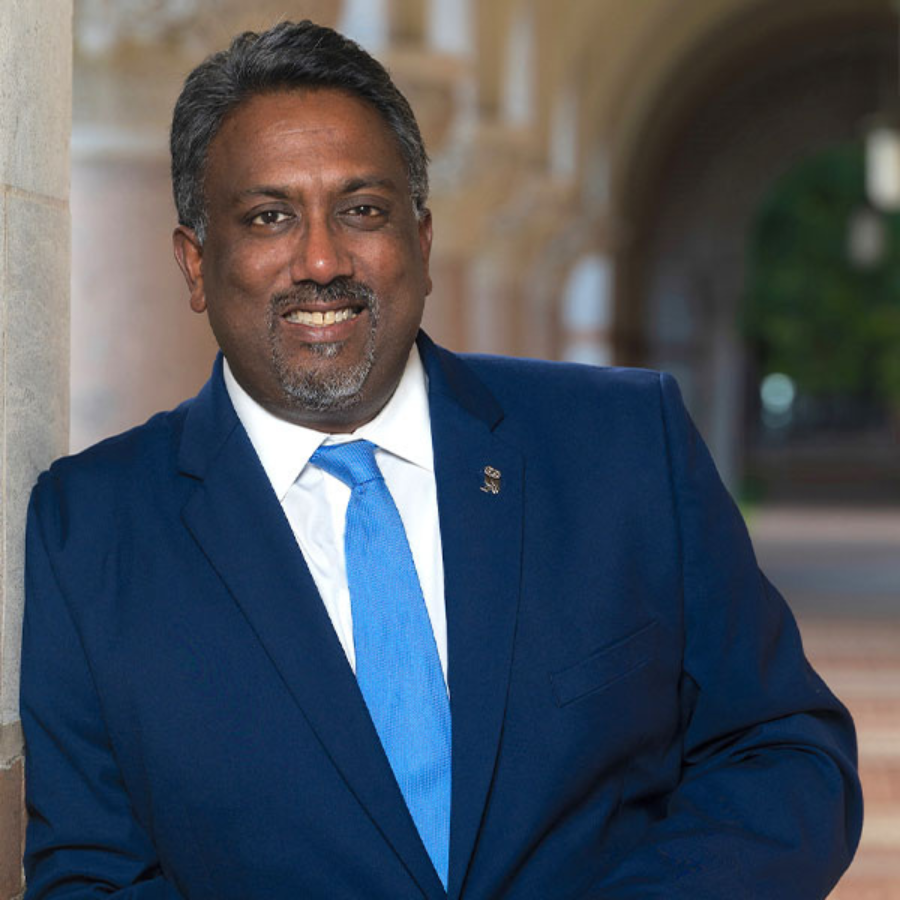
Paul Cherukuri, Vice President of Innovation
Paul Cherukuri, Vice President of Innovation
"Innovation is something that happens every day on campus, and now we’re accelerating the next step to support its progress given our unique position to do so."

Why Do We Do This? Because We Can.
Rice is the only university in Texas to break the Top 20 U.S. News & World Report rankings, and geographically speaking, its next closest competitors are several state lines away. That creates a wide swath of territory for Rice to attract and enrich relationships with cream-of-the-crop candidates for research-fueled endeavors. We’ve registered on international radars, too, which further broadens our opportunities that are rife with results.
For some of those upcoming results, we already know we can achieve them because we’ve done it before.
Rice helped develop the procedure for heart transplants and was a Nobel Prize recipient for pioneering research about a new form of carbon that created the way for nanotechnology and energy dynamics. Those are the kinds of demonstrable marks that illustrate the path the university intends to travel.
Ramesh’s support in the research realm also opens up the opportunity to springboard the wealth of knowledge being developed today into the possibilities of tomorrow. That is where Cherukuri will enter the scene as vice president of Innovation.
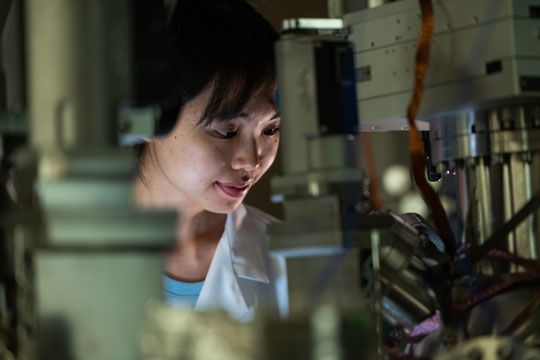
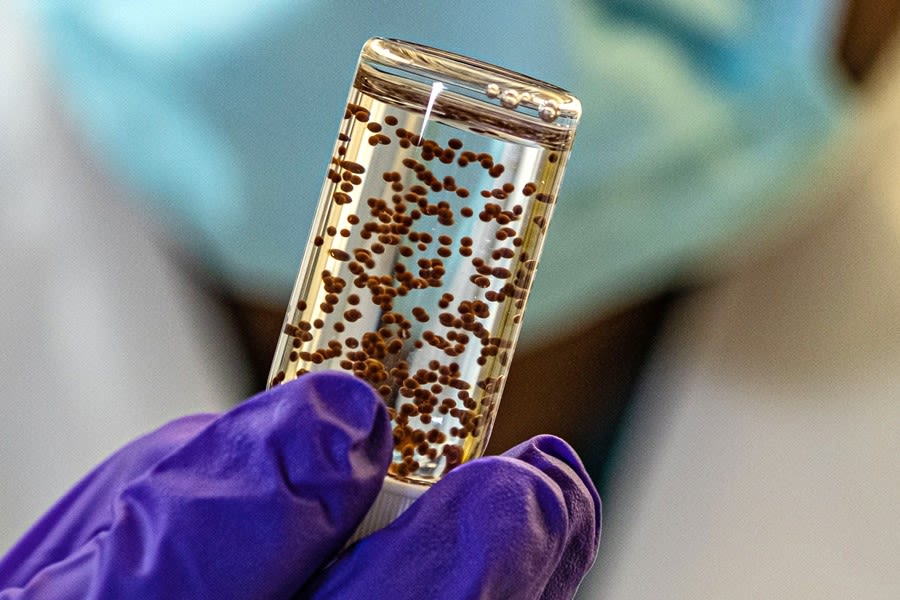
Tiny alginate bead implants invented in the laboratory of Rice University bioengineer Omid Veiseh can be loaded with cells that produce cytokines, proteins that play a major role in immune response. The bead implants act as “drug factories” that deliver highly localized, highly concentrated doses of cytokines. Veiseh and collaborators at Baylor College of Medicine are developing versions of the 1.5-millimeter-wide implants that could heal heart muscle injuries caused by heart attacks. (Photo by Jeff Fitlow/Rice University)
Tiny alginate bead implants invented in the laboratory of Rice University bioengineer Omid Veiseh can be loaded with cells that produce cytokines, proteins that play a major role in immune response. The bead implants act as “drug factories” that deliver highly localized, highly concentrated doses of cytokines. Veiseh and collaborators at Baylor College of Medicine are developing versions of the 1.5-millimeter-wide implants that could heal heart muscle injuries caused by heart attacks. (Photo by Jeff Fitlow/Rice University)
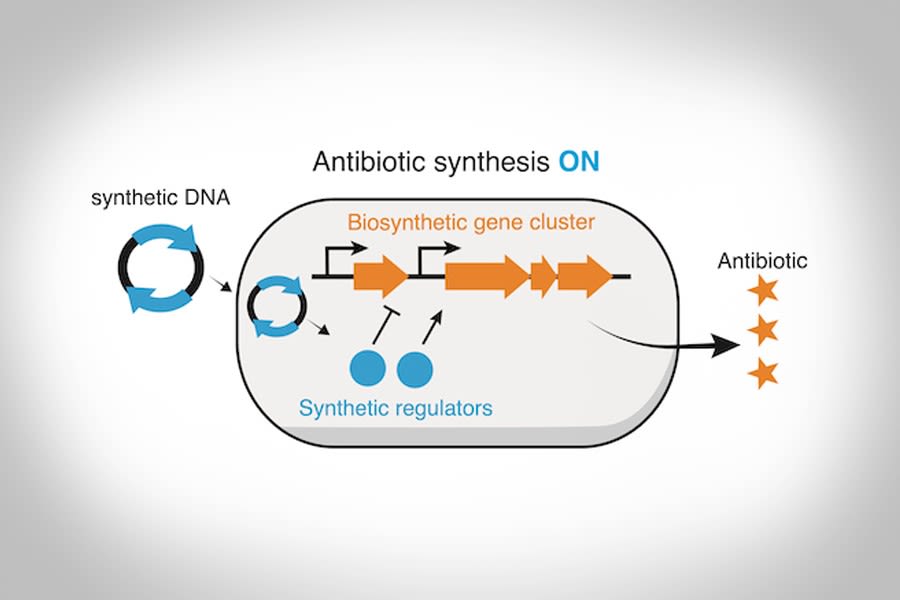
Rice bioscientists have designed novel on and off switches to control the “silent” genes – as many as 40 of them – in a strain of bacteria. Their CRISPR-based strategy could boost the perpetual search for new antibiotics. (Illustration by Andrea Ameruoso/Chappell Lab)
Rice bioscientists have designed novel on and off switches to control the “silent” genes – as many as 40 of them – in a strain of bacteria. Their CRISPR-based strategy could boost the perpetual search for new antibiotics. (Illustration by Andrea Ameruoso/Chappell Lab)
Why Does This Matter? Because It is Our Future.
An Office of Innovation might be a foreign title for most universities, but at Rice, we recognize the importance of this role, and Cherukuri is the right fit. Prior to being named vice president, he was executive director of the university’s Institute of Biosciences and Bioengineering. During his six-year tenure in that role, he engaged with faculty to develop interdisciplinary translational research partnerships with federal and corporate agencies, garnering nearly $37 million in funding aimed at accelerating the development of new technologies into commercializable products.
In this new position, he will interpret our research arm’s work and translate it into the futuristic advancements waiting to be discovered. To do that, Cherukuri will utilize the developments taking place and provide the space for them to launch new ideas and creations.
The idea does seem change-making, and Cherukuri believes Rice, given its wealth of curiosity-driven constituents, is the right place to lead the charge in this promise-filled direction with an eye toward technology translation, startup creation, commercialization and entrepreneurship training.
Some areas where that might take shape are with The Ion, a Houston-based, newly launched incubation lab that holds potential for startup companies to develop out-of-the-box conceptions. It also means culling the intrinsic nature of Rice’s address in the heart of Houston to build something that inches the world closer to an equitable and accessible common good.
“Taking this new position is equal parts a daunting task and an exciting opportunity. By developing this new innovation branch to springboard what is happening under Ramesh’s purview, we will reinforce Rice’s mission to enhance societal impact. Innovation is something that happens every day on campus, and now we’re accelerating the next step to support its progress given our unique position to do so,” Cherukuri said.
Part of Cherukuri’s job will also lend itself to bridging the connection between purpose-minded inventors and creative thinkers, with a sharp focus on shortening the incubation period.
“Most research universities maximize curiosity-driven thinkers, but the issue with that is time. It takes 50 to 100 years before academic research becomes utilized in textbooks or normal practice. What the Office of Innovation aims to do is shorten that timeline. We want to solve problems in our lifetime. That’s what Rice is going to do and that is what the Office of Innovation represents,” he said.
It’s an exciting time for Rice, and we look forward to the exponential possibilities that lie ahead.

This content was paid for and created by Rice University. The editorial staff of The Chronicle had no role in its preparation. Find out more about paid content.


